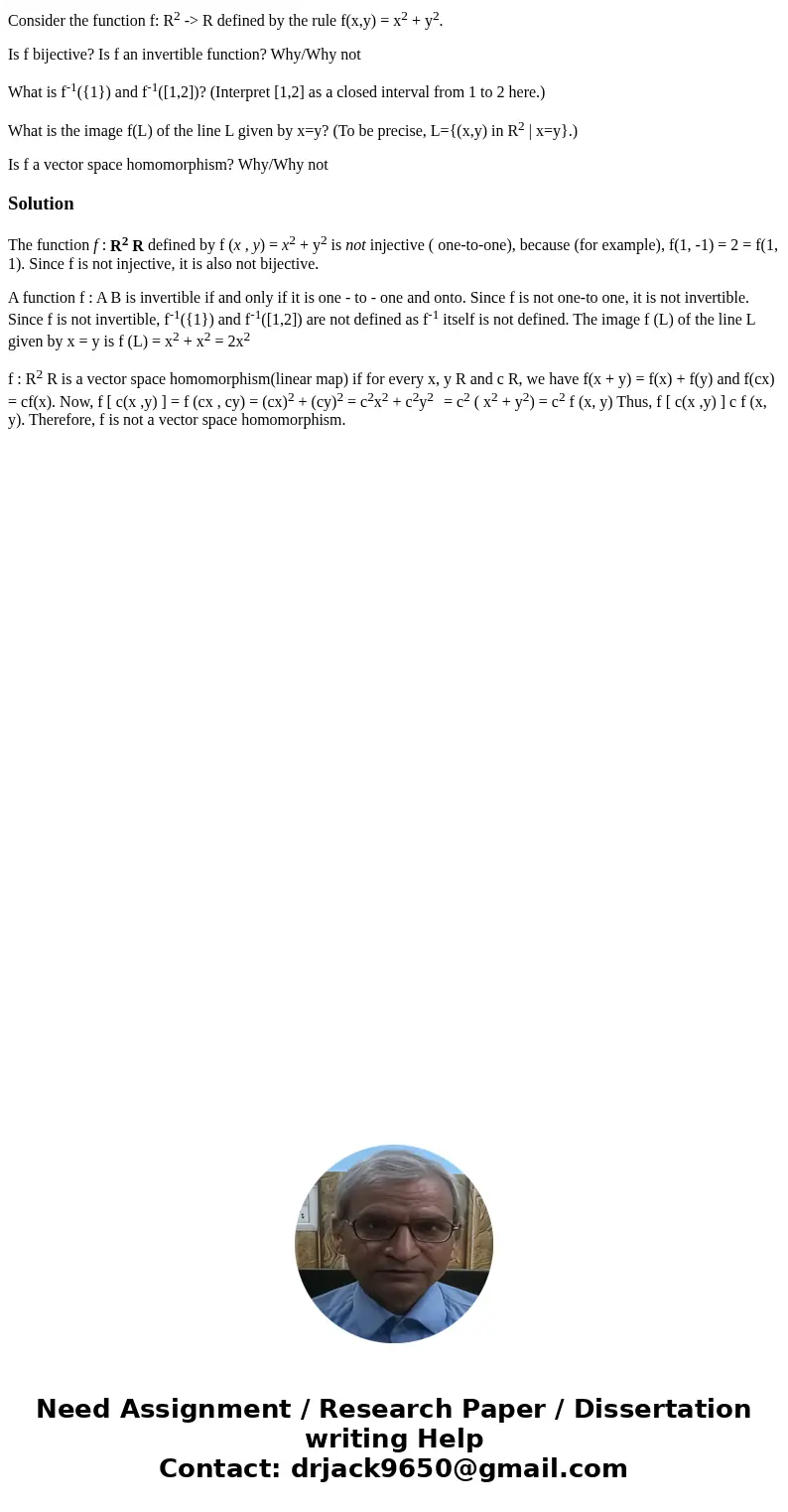Consider the function f R2 R defined by the rule fxy x2 y
Consider the function f: R2 -> R defined by the rule f(x,y) = x2 + y2.
Is f bijective? Is f an invertible function? Why/Why not
What is f-1({1}) and f-1([1,2])? (Interpret [1,2] as a closed interval from 1 to 2 here.)
What is the image f(L) of the line L given by x=y? (To be precise, L={(x,y) in R2 | x=y}.)
Is f a vector space homomorphism? Why/Why not
Solution
The function f : R2 R defined by f (x , y) = x2 + y2 is not injective ( one-to-one), because (for example), f(1, -1) = 2 = f(1, 1). Since f is not injective, it is also not bijective.
A function f : A B is invertible if and only if it is one - to - one and onto. Since f is not one-to one, it is not invertible. Since f is not invertible, f-1({1}) and f-1([1,2]) are not defined as f-1 itself is not defined. The image f (L) of the line L given by x = y is f (L) = x2 + x2 = 2x2
f : R2 R is a vector space homomorphism(linear map) if for every x, y R and c R, we have f(x + y) = f(x) + f(y) and f(cx) = cf(x). Now, f [ c(x ,y) ] = f (cx , cy) = (cx)2 + (cy)2 = c2x2 + c2y2 = c2 ( x2 + y2) = c2 f (x, y) Thus, f [ c(x ,y) ] c f (x, y). Therefore, f is not a vector space homomorphism.

 Homework Sourse
Homework Sourse